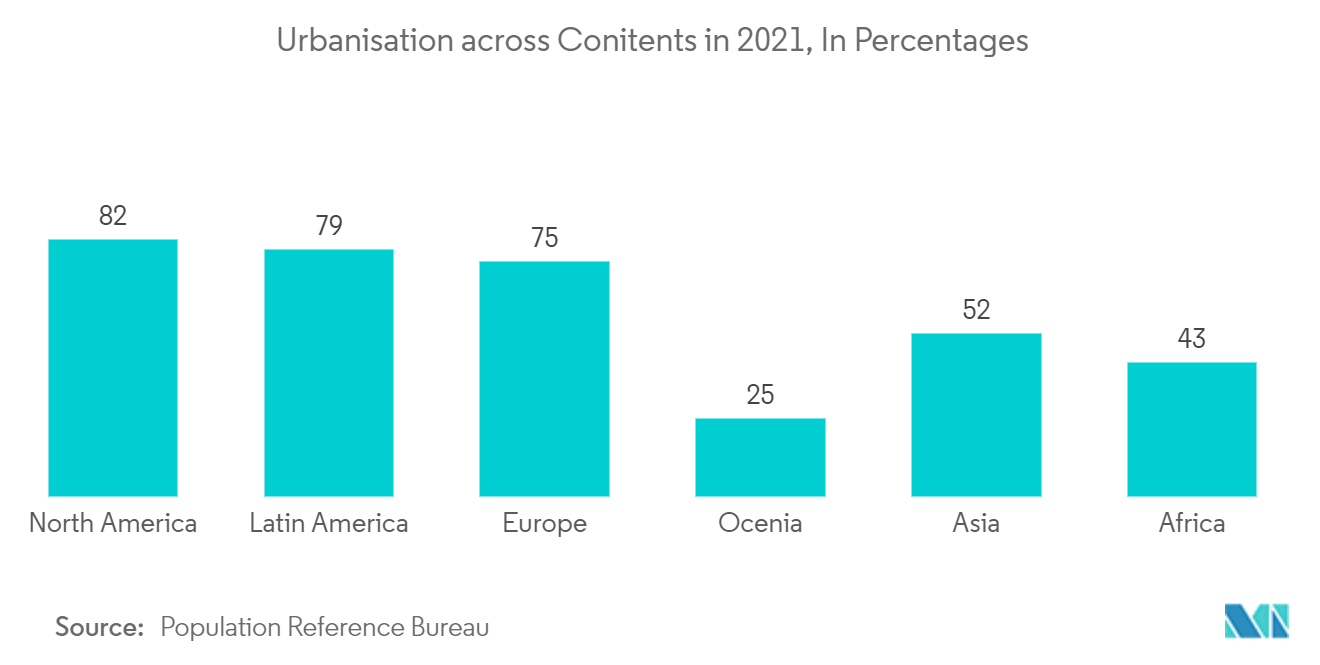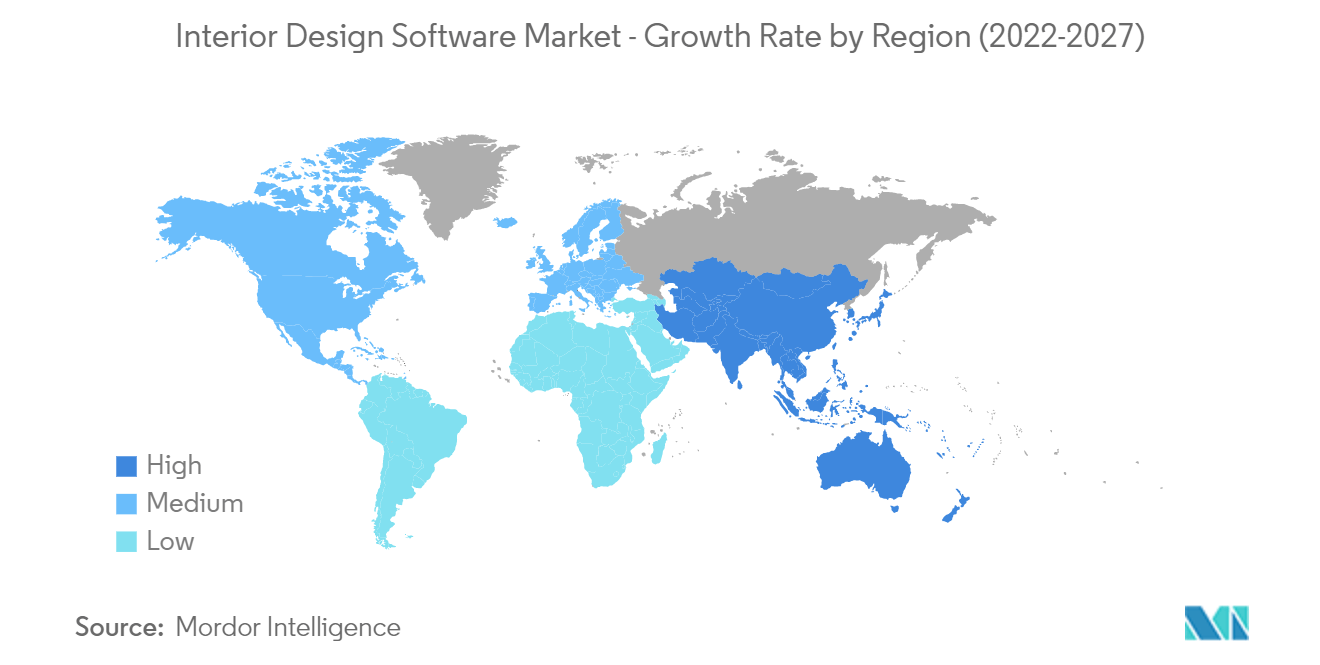Market Trends of Interior Design Software Industry
This section covers the major market trends shaping the Interior Design Software Market according to our research experts:
Residential Sector to Witness the Highest Growth
- The residential sector is anticipated to have the largest growth rate over the forecast period, mainly due to the growing population and rising demand for a pleasant and comfortable living space. Moreover, with increasing technological innovation, a home is no longer a household affair. In the current scenario, millennials with unconventional living patterns consider their home decor to reflect their personality. Most homeowners prefer design firms that can understand their vision and curate cost-effective designs for kitchens, living rooms, wardrobes, etc.
- Furthermore, interior design companies use augmented and virtual reality, cloud computing, and 3D technology to capture the growing demand and offer customers seamless home interiors and renovation experiences. There are various 3D platform vendors, such as Cedro, an online 3D home design platform used by professional home builders, remodelers, and interior designers to create 2D and 3D floor plans and interior and exterior renderings. Also, startups such as Livspace, HomeLane, Bonito Designs, Infurnia, and Spacejoy, are eyeing significant growth in the segment by leveraging funds to increase their user base. From getting to know the customer to design and implementing to deliver the final product, these firms are significantly attracting investors in the sector while creating a chunk of opportunities for various fresh talents.
- The increasing residential construction across the developed and developing economies is driving the adoption of the market studied. According to the US Census Bureau, the privatelyowned housing completions in June 2022 were at a seasonally adjusted annual rate of 1,365,000, which is 4.6 per cent above the June 2021 rate of 1,305,000.
- Furthermore, the rapid globalization of building standards and codes in contemporary housing and the growth of populations during this century has increased the demand for an immediate response from designers in terms of space rationalizing to fulfil the resulting lack of architectural habitat. Moreover, with the upcoming smart cities and smart home projects in the Asia-Pacific and Latin American regions, the residential segment's market is set to grow over the forecast period. According to the American Society of Interior Designers study, there is a positive outlook on new construction with a robust and progressive shift in various sectors in the residential building segment.
- Today, half of the world's population lives in rapidly expanding cities: often in a megalopolis with dozens of millions of inhabitants, such as Tokyo, Shanghai, and Mexico City. Impressive figures are on the rise, as the number of people living in metropolises will increase further at the expense of rural areas. According to the latest World Urbanization Prospects, the report on urbanization drafted by the UN DESA, over 6 Bn people will live in cities in 2045. Also, there has been a sharp growth in housing demand as Tier 2 and Tier 3 cities spread across Asian nations like China and India. The market for interior design software is being driven by urbanization in these nations.

Asia Pacific to Register the Highest Growth
- The Asia Pacific segment is anticipated to have the largest growth rate during the forecasted period. Building infrastructure plans in the nations like China and India are revised to be a significant contributor to the expansion of the Asia-Pacific segment. As per the market study, India is presumed to rank 3rd in terms of construction volumes by 2030 with the aim of 11 Mn buildings to be constructed, therefore highlighting bright prospects for the market.
- Growing population and urbanization in major cities in the Asia Pacific region, such as Tokyo, Beijing, China, Japan, and Mumbai, India, led to an augmented increase in residential sectors. Recently, China's five-year national development strategy was just unveiled. With the aim of 65% urbanization in its 14th Five-Year Plan (FYP) (2021-2025), the government will add 10 million urban dwellers annually through the end of 2025.
- Start-ups are upending the local interior design industry. Livspace has developed into one of India's major home interior design and remodelling platforms. The business has created over 5,000 residences totalling over 2 million square feet, and it collaborates with over 2,000 other designers. The business successfully built a strong brand presence due to its partnership with Brand Capital, The Times Group's strategic investment arm.
- Southeast Asia is estimated to have the largest potential for market expansion due to its increasing urbanization, burgeoning population, and economic growth in countries such as Thailand, Indonesia, Vietnam, the Philippines, and Malaysia. In addition, according to the Union Ministry of Housing and Urban Affairs, 70% of India's future cities have to be developed to meet the country's ever-growing urban population, which will thereby create a wide range of growth opportunities for the Interior Design Software Market in the next upcoming days.


